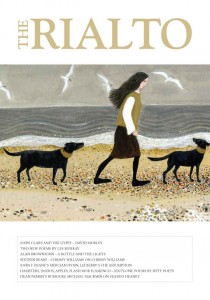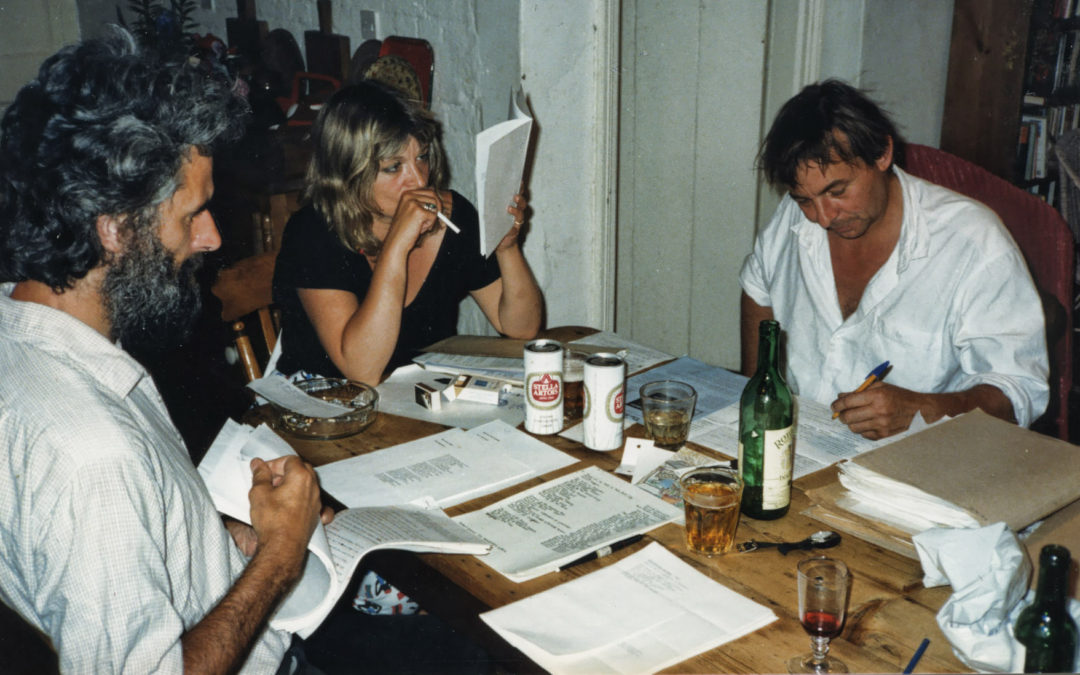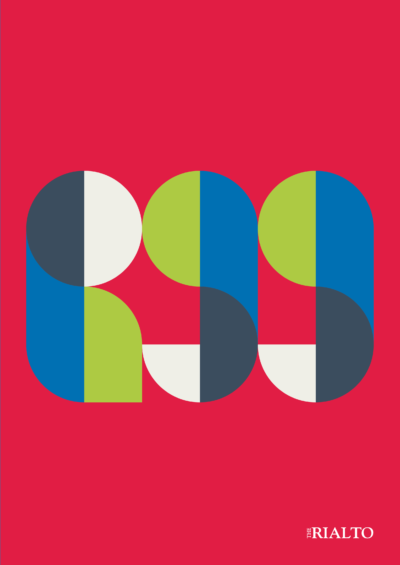The autumn issue has just arrived. This time it felt different: my name is on page 2, as one of the Assistant Editors (note the capitals), along with Abigail Parry. We have got this job for the next two issues, winter and spring, under The Rialto’s Editor Development Programme. which is being run in conjunction with the Poetry School. We are helping Editor Michael Mackmin choose the poems for the winter issue. Then we will have 15 pages of the spring issue to edit ourselves.
I’m going to write here about the experience. Part of that is, of course, the poems – what it’s like to read unpublished poems in large numbers. Panning for gold. Hoping to find a nugget the size of my fist. And what it’s like to turn the chosen poems into a magazine.
I’ll also write about other aspects. I knew that a poetry magazine is much more than the sum of its poems. Design, money, online presence, publicity and marketing, distribution, associated activities such as readings and competitions, money again… But I didn’t realise the complexity of some decisions. We went to a meeting of The Rialto’s advisory board in Norwich, and were impressed by the quality of the discussion, and the people Michael has got supporting him – staff members Nick and Helen (listed on page 2, more about them here), and the ‘local heroes’, as Michael calls them, who act as advisors.
It won’t be possible to write about everything. There are some subjects that poetry magazines tend not to talk about: their subscription numbers, for example. But the larger ones, including The Rialto, are registered charities, so you can read their accounts on the Charity Commission website. For the avoidance of doubt, Michael made it clear at the start that the secrecy of the confessional applies to individual submissions.
He was generous to name us in the new issue, for which all we did was proof-reading – our first serious task because we started at the end of the magazine production cycle, when it was about to go to press.
Not that proof-reading is easy. Contributions to The Rialto have to be sent by post. This is not an electronic-age anachronism. Printing out poems and posting them, with SAE and covering letter, takes a little time and thought. Time and thought is good, for submitting to poetry magazines. At least it is good from the editor’s point of view.
So: every time there’s a new issue, Michael has to type out around sixty poems from the paper copies. Near impossible never to miss out a word, or a line, or even a stanza. Or change something slightly. Get indentations wrong. When reading through the proofs, already corrected once, I was haunted by the memory of reading a poem in another poetry magazine which had been republished from the previous issue, with an apology: it had been attributed to the wrong author.
The subconscious can take over when copy typing. Michael asked us to check the two poems by Les Murray extra carefully. Once, Les Murray had written in a poem for The Rialto, ‘God exists’. Michael transcribed this, rather excellently, as ‘God exits’.
Anyway, I did find mistakes, which, perversely, made me pleased – that such a nerdish activity had real purpose. No missed stanzas or wrong names. Mostly the occasional missed-out or mistyped word (not the sort of mistype a spell check would find), and wrong spacings, and one mis-spelt name. I made a few layout suggestions, most of which weren’t valid because the magazine looks different when it’s three-dimensional, with a spine.
The number and names of poets listed in the contents page matched those on the back cover, but the biographies were one short. One poet has reason to be grateful…
 I’m not that good at it. I actually read two sets of proofs, with a tricky conversion process done by Nick in between, from word document to properly laid-out and paged pdf. I picked up things in the second set that I hadn’t noticed first time round. Already I am thinking that poetry magazine editors have superhuman powers. And hoping someone isn’t, right now, contacting Michael to point out a mistake.
I’m not that good at it. I actually read two sets of proofs, with a tricky conversion process done by Nick in between, from word document to properly laid-out and paged pdf. I picked up things in the second set that I hadn’t noticed first time round. Already I am thinking that poetry magazine editors have superhuman powers. And hoping someone isn’t, right now, contacting Michael to point out a mistake.
While an issue is being finalised, reading of submissions has to continue. Michael let us in gently. He gave us each two fat yellow folders, containing photocopies of around 30 submissions. After a couple of weeks the three of us met and went through them, to calibrate reactions. Then we went through the same process again, with another 30. We marked them No and Maybe, with the occasional Yes.
I think we were all surprised that our No’s and Maybe’s matched so closely. One poet’s work got a unanimous Yes, and the only decision needed was which poem(s) to take. Otherwise, the discussion centred on which of the Maybe’s could make it to a Yes – with one exception in the first round, where Michael was the only one to notice a short and intriguing poem. He persuaded us easily. That submission had been the last in my pile. Lesson for me: don’t read too much at once, and learn to notice when you’ve reached capacity. If you read the submissions twice (which I’m doing, so far), change the order you read them in.
Michael has now given us each around 50 submissions, not photocopied. We are to read these and shortlist the ones we like enough to bring to a meeting, where we will all read each others’ and make decisions. No Michael as a safety-net for the rejection of poems not shortlisted. Our intention is to reduce the backlog of poems to be read. We are just starting on poems sent in July.
Next time I’ll write about the experience and process of reading the poems.
Fiona Moore






